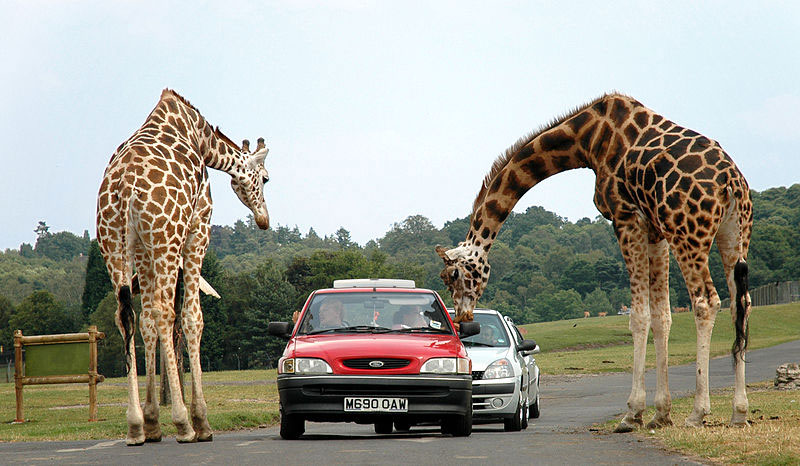Geology Tours
-
Go on Tour!
-
upcoming tours
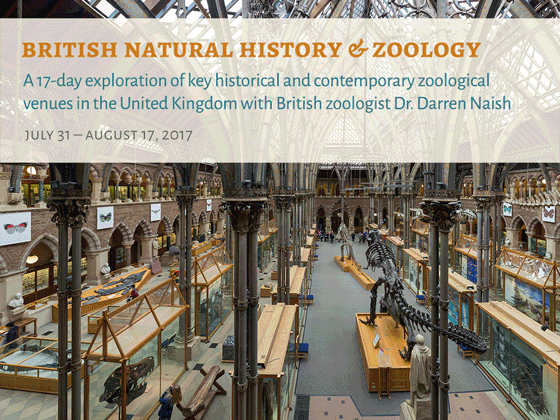
JULY 31—AUGUST 17, 2017
Join us this summer for a 17-day natural history tour with Dr. Darren Naish
Join acclaimed zoologist and author Dr. Darren Naish on a unique tour of zoology-themed attractions across England as we visit zoos, safari parks, museums and other venues. Several different themes link the various stops on our tour. The primary focus involves the rich history of British naturalism and the discovery of new animal species—both fossil and living—and their introduction to both the scientific world and public arena. We will highlight crucial contributions English science has played in the understanding, exploration, and discovery of the natural world by our visits to historic zoos and museums. Another theme involves how animals of all kinds have been portrayed to the public. Museums, zoos, safari parks and other venues will be discussed as places where art, design and even architecture have been used to educate people about zoology and the life of the past. And a third theme will involve the keeping of live animals and their husbandry and conservation—many of the zoos, parks, reserves and aquaria we are visiting being key locations in the history of animal keeping and of conservation and preservation.
“We can’t say enough good things about Darren Naish… He mentioned you might use him for future tours… Well, sign us up!” —Sheree & Bill M.
Where possible, we have arranged special behind-the-scenes trips, talks, and access that will enable us to hear the back-story to various of our venues and to see important, relevant specimens that are kept off-show.
In London, we visit the famous Natural History Museum where we will have special behind-the-scenes access to the collections. The Natural History Museum is one of the world’s most important museums, housing specimens from across the world and being the first to display numerous species living and extinct. The building itself was specially designed as a sort of ‘cathedral to nature’ and we see numerous fascinating details of its design and stonework. We will also examine the fascinating stories behind some of the items on display. Among these is the amazing blue whale model—the first of its kind to be constructed.
While in London we will also be visiting ZSL London Zoo, one of the world’s most famous zoos and the first to display a great many specific animals, many of which were new to science when first displayed. Our visit will highlight the zoo’s importance as a place of scientific discovery and its changing look as both architectural styles and thoughts on animal husbandry changed over the decades. The role that British zoos have played in zoological discovery and in introducing recently discovered, exotic animals to both the scientific community and the public is a theme that we will revisit elsewhere.
At Knebworth House we will be seeing a unique collection of life-sized prehistoric animal dinosaurs. While certainly not considered accurate, models of this sort give us an opportunity to consider how knowledge of dinosaurs and other prehistoric animals has been, and still is, conveyed to the public and how it has changed over the years. We will be given a unique talk on the dinosaurs and an exclusive viewing before the trail opens to the public and, all being well, be met by a family member of the historic Knebworth House.
Domestic animals will not be ignored on this tour: the role that such species as the domestic horse have played in human history is significant and the biology, anatomy, and evolution of these animals is deeply intertwined with our knowledge of their wild relatives. We have an entire day devoted to the domestic horse and its origins and the history of its role in racing, visiting both the National Horse Racing Museum at Newmarket and the National Stud. We will be receiving a guided tour of the facilities at the Stud and aim to see the Foaling Unit, Stallion Unit, Breeding Sheds, and more.
We move on to Cambridge where we will visit the spectacular University Museum of Zoology, a packed and historically significant collection that includes the skeletons of obscure modern mammals, the fossils of early tetrapods and many more. Recently refurbished, the collection contains specimens that once belonged to Darwin, Wallace and the famous ornithologists Alfred Newton and Hugh Strickland. We will see highlights old and new and will be given special behind-the-scenes access.
We will make our way northwards towards Manchester travelling through the magical Peak District and stop at a renowned Birds of Prey centre where we will witness around 30 different species all in flight at the same time and then hear about the conservation work being done to protect some of the endangered species.
At Bristol Museum and Art Gallery we will, again, be gaining special behind-the-scenes access to the geology and biology collections where we will see numerous unique, historically significant specimens. Founded in the early 1800s, the museum has long been an important repository of fossil marine reptiles and dinosaurs from the Bristol area as well as exotic animal collections from around the world.
Our visit to Bristol Zoo will also highlight the role of this zoo in zoological discovery and conservation. Opened in 1836, it was the UK’s first provincial zoo, its often arcane architecture reflecting the 19th century philosophy that zoos were for public exercise and recreation more so than the conservation or well-being of animals. You will hear about the key role the zoo played in public perception of animals throughout the late 20th century and its modern role as a conservation centre.
Slimbridge Wildfowl and Wetland Trust is yet another historically important stop on our tour. Opened in 1946 by founding conservationist Peter Scott, it has been, and remains, a globally important site in ornithological conservation and research. Slimbridge combines landscaped wetlands home to an enormous number of wild, often migratory, birds with the world’s largest collection of wildfowl.
The Oxford University Museum of Natural History is another spectacular museum with a significant scientific role. Constructed in the 1850s and featuring ornate carvings and cast iron pillars, it was the scene for the famous evolution debate of 1860s. We will see the very first dinosaur to be scientifically recognised, Pleistocene hyenas studied by William Buckland, and hear about—and hopefully see—the famous dodo specimen stored in the collections.
We finish our tour with a visit to the famous Walter Rothschild Museum at Tring, Hertfordshire, home to the largest single collection of zoological specimens. Walter Rothschild sent collectors worldwide such that they would obtain birds and other zoological specimens for him, and the museum today contains unparalleled collections of great importance. Flightless birds will be one area of our focus. We will hear Rothschild’s story, see and hear about many of the remarkable items in his collection and, again, we will be getting behind-the-scenes access and the chance to see some very special, historically significant specimens!
Since this summary was written, this fascinating tour continues to evolve and we will combine the educational and informative aspects with moments of leisure and pleasure. We hope you can join us on this natural history tour which we are sure will contain many precious and memorable moments to savour!
Click an image to enlarge it.
About Dr. Darren Naish
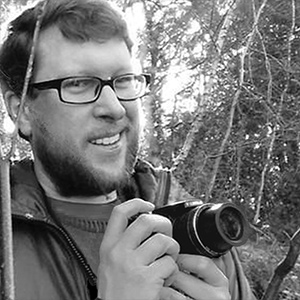
Dr. Darren Naish is a British zoologist and author who writes widely about animals living and modern. Based at the University of Southampton in southern England, he has worked on dinosaurs, pterosaurs, marine reptiles and other extinct reptiles as well as on modern big cats, the swimming abilities of giraffes, conservation biology and the evolution of flightless birds. He has—with colleagues—named numerous new species, most famously the early tyrannosaur Eotyrannus lengi and the small pterosaur Vectidraco daisymorrisae. He has authored or co-authored over ten books, including (with David Martill) Walking With Dinosaurs: The Evidence, The Great Dinosaur Discoveries, and Hunting Monsters: Cryptozoology and the Reality Behind the Myths. He blogs at Tetrapod Zoology, currently hosted at Scientific American, and has been blogging for more than 10 years.
Itinerary
- Day One: Monday, July 31, 2017
- Arrival day and overnight in London area with Welcome Reception
- Day Two: Tuesday, August 1, 2017
- Morning visit to the Natural History Museum to see Mammal Hall and other attractions. Thames River Cruise and a ride on the London Eye; overnight London area
- Day Three: Wednesday, August 2, 2017
- Morning visit to ZSL London Zoo. Afternoon free; overnight London area
- Day Four: Thursday, August 3, 2017
- Depart for Cambridge area, visiting Dinosaur Trail at Knebworth House
- Day Five: Friday, August 4, 2017
- Equine visit to National Horse Racing Museum and the National Stud in Newmarket
- Day Six: Saturday, August 5, 2017
- Cambridge guided tour and Zoology Museum visit; overnight in Cambridge area
- Day Seven: Sunday, August 6, 2017
- Enjoy a Cambridge Punt Tour looking out for the local wildlife followed by a visit to Museum of Archaeology & Anthropology; overnight Leicester area
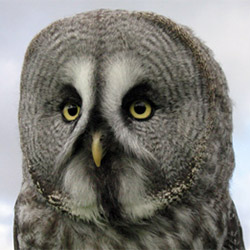
Lumpy great grey owl (photo courtesy of the Gauntlet Birds of Prey Eagle and Vulture Park)
- Day Eight:Monda, August 7, 2017
- Guided walk at the Rutland Water Nature Reserve then on to visit Leicester New Walk Museum & Art Gallery; overnight in the area
- Day Nine: Tuesday, August 8, 2017
- Travel through the Peak District National Park with visit to Gauntlet Birds of Prey Eagle and Vulture Park; overnight in Manchester
- Day Ten: Wednesday, August 9, 2017
- Visit Manchester Museums and free time; overnight Manchester
- Day Eleven: Thursday, August 10, 2017
- Visit to Blue Planet Aquarium, Chester Zoo and guided tour of Chester; overnight Manchester
- Day Twelve: Friday, August 11, 2017
- Free day in Manchester
- Day Thirteen: Saturday, August 12, 2017
- West Midlands Safari Park and Slimbridge Wildfowl & Wetland Trust; overnight Swindon
- Day Fourteen: Sunday, August 13, 2017
- Visit Bristol Zoo, Museum & Art Gallery; overnight Oxfordshire area
- Day Fifteen: Monday, August 14, 2017
- Visit Brize Norton Crocodiles and Cotswolds Wildlife Park; overnight Oxford area
- Day Sixteen: Tuesday, August 15, 2017
- Visit the Oxford University Museum of Natural History and guided city tour
- Day Seventeen: Wednesday, August 16, 2017
- Visit Walter Rothschild Museum and Whipsnade; overnight London area
- Day Eighteen: Thursday, August 17, 2017
- Travel home
The above itinerary is subject to change without notice as some visits may not be possible due to unforeseen circumstances and/or operational reasons.
Pricing
- DOUBLE OCCUPANCY: £3469 per person*
- SINGLE OCCUPANCY: £4258 per person*
*Room fee is in addition to the $810/per person deposit† noted below, and does not include airfare, or gratuities.
Room fee price includes: 17 nights accommodation on a bed and breakfast basis; daily coach transportation on a 49 seat vehicle; daily tour escort services; all entrances to museums, parks, aquariums and other attractions where stated as included; additional meals (up to 6 dinners or lunches are included); tax and all coach parking fees; the services of local guides where appropriate.
†Participants will pay in two stages. First there will be a deposit of $810 per person paid in U.S. dollars. And second, on February 18, 2017, a credit card number you supply will be charged the remainder in Pounds Sterling. A 2% foreign money exchange fee will be added to the amount charged in Pounds Sterling.
Airfare
You must book your round-trip airfare to the UK separately from your own point of origin, but our travel agent, Dreammaker Travel, Inc. will get you the best possible price. Please email Dreammaker Travel, Inc., or, for more infrmation, please call 1-561-204-3100.
Questions & Registration
Please contact Brandy Harris at dreammakertravel@aol.com or call 1-561-204-3100 with questions or with a credit card to secure your spot.
Dream Maker Travel
421–3546 South Ocean Blvd
Palm Beach, FL 33480
1-561-204-3100 (phone)
1-413-604-7958 (fax)
Download full details and registration form
SKEPTIC App
Whether at home or on the go, the SKEPTIC App is the easiest way to read your favorite articles. Within the app, users can purchase the current issue and back issues. Download the app today and get a 30-day free trial subscription.

![Pitt Rivers Museum Interior, Oxford, England, by Diliff (own work) [CC BY-SA 3.0 (http://creativecommons.org/licenses/by-sa/3.0) or GFDL (http://www.gnu.org/copyleft/fdl.html)], via Wikimedia Commons](https://www.skeptic.com/geology_tours/2017/UK-Natural-History-and-Zoology/images/Pitt_Rivers_Museum_Interior_Oxford_UK_by_Diliff.jpg)
![Chamaeleon at the Bristol Zoo, by Airwolfhound from Hertfordshire, UK [CC BY-SA 2.0], via Wikimedia Commons](https://www.skeptic.com/geology_tours/2017/UK-Natural-History-and-Zoology/images/chameleon-Bristol-Zoo-by-Airwolfhound.jpg)
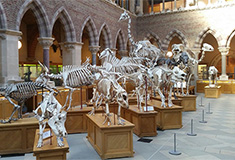
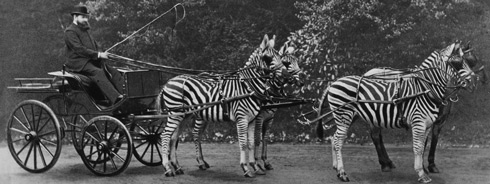
![Stan (Tyrannosaurus rex) cast at the Oxford University Museum of Natural History, by Ballista at the English language Wikipedia [GFDL or CC-BY-SA-3.0], via Wikimedia Commons](https://www.skeptic.com/geology_tours/2017/UK-Natural-History-and-Zoology/images/stan-t-rex-Oxford-Museum.jpg)
![Northern rockhopper penguin (Eudyptes c. moseleyi) in ZSL London Zoo, by Katie Chan (own work) [CC BY-SA 4.0 (http://creativecommons.org/licenses/by-sa/4.0)], via Wikimedia Commons](https://www.skeptic.com/geology_tours/2017/UK-Natural-History-and-Zoology/images/northern-rockhopper-penguin-ZSL-London.jpg)
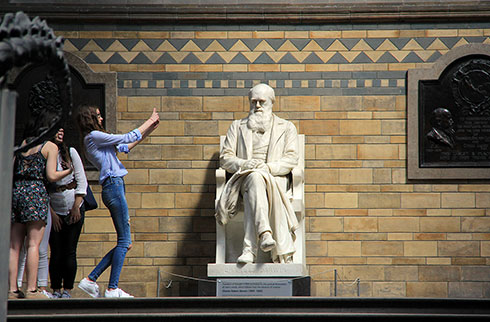
![A sumatran tiger at Chester Zoo, by Brian McKay (Flickr) [CC BY 2.0], via Wikimedia Commons](https://www.skeptic.com/geology_tours/2017/UK-Natural-History-and-Zoology/images/sumatran-tiger-Chester-Zoo.jpg)
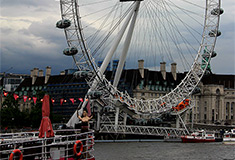
![Entrance to The Zoology Museum, Cambridge University, by Satinder Singh (SS1981) at the English language Wikipedia [GFDL or CC-BY-SA-3.0], via Wikimedia Commons](https://www.skeptic.com/geology_tours/2017/UK-Natural-History-and-Zoology/images/Cambridge-zoology-museum-entrance.jpg)
